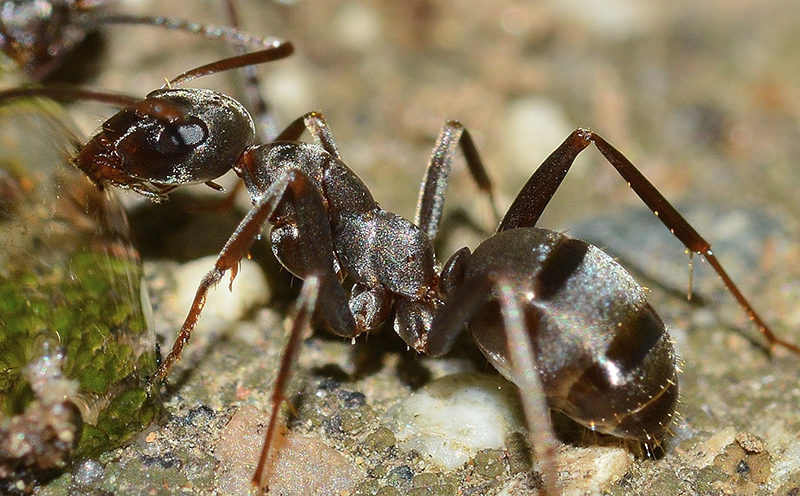Biology Of Local Carpenter Ants
Carpenter Ant Treatment Services In Twin Cities, MN
All About Carpenter Ant Biology
Carpenter ants are large black, or red and black, ants with white or yellowish hairs on the abdomen. They have one node (petiole) and a rounded thorax when viewed from the side, and they have elbowed antennae. Workers range from 3/8″ to a little over 1/2″ long, whereas queens can reach almost 1″ in length. They are crepuscular, which means they’re most active during twilight. While they don’t sting, they’re capable of biting. They will sometimes spray formic acid onto bites for extra effect. This is a defensive reaction, typically occurring when a material they have colonized is disturbed.

Breeding usually occurs in late spring or early summer, when hundreds of winged females and males will emerge from a colony and engage in a “nuptial flight”. Males will then die and the females will lose their wings before excavating a small chamber that she seals herself in to start a new colony.
Carpenter ants have been known to forage up to 100 yards for food, laying pheromone trails for other ants to follow. They often shepherd aphids (“ranch”), protecting them from predators and collecting their honeydew (waste) for food. They also do something called “farming”- carrying leaves back into a special chamber in the colony where they cultivate fungus to eat. They’ll also feed on other insects, nectar, and dead animals. In our homes they may feed on pet food, meat, and sweets.
Carpenter Ant Facts
Interestingly, Carpenter ants are clean ants – they remove saw dust, dead ants, and old food from the colony. They leave piles of this debris, called frass, outside of the colony. They have even been known to collect resin from trees to disinfect their colonies. They can detect sickness or disease; they will react by quarantining sick members, moving the colony, and producing a large number of winged ants for a nuptial flight. This reaction can happen as a result of using pesticides that are too strong (ie Raid and other hardware store products). Because of this, we control carpenter ants with baits and residual products that work slowly, allowing the carpenter ants to trail treatments into the colony and infect multiple members before dying.
Colonies can live for years, though individuals live only months to a year. Queens can live up to 10 years. In captivity, these estimates can be extended.
Control Your Carpenter Ant Problem Today!
Please fill out this form if you are interested in carpenter ant control services. All of our services are fully warrantied! A representative of Abra Kadabra Environmental Services will be in touch with you shortly.



